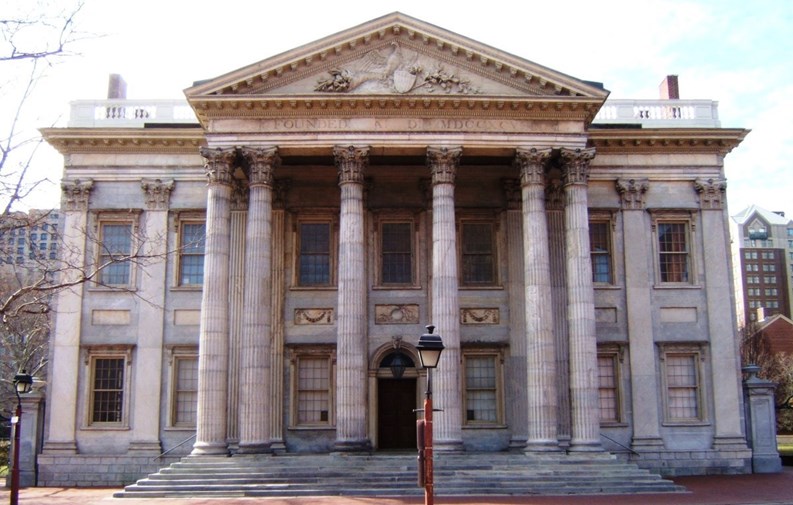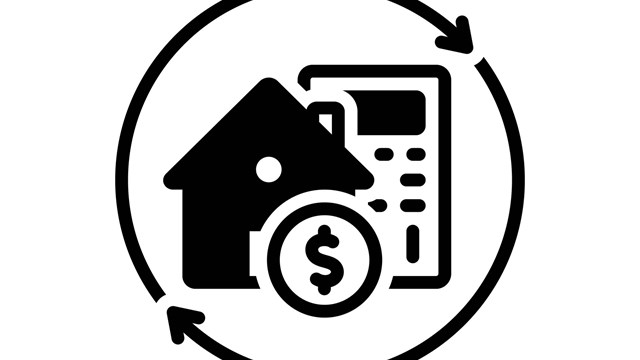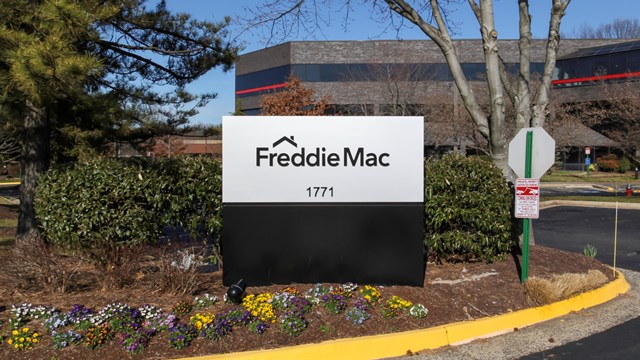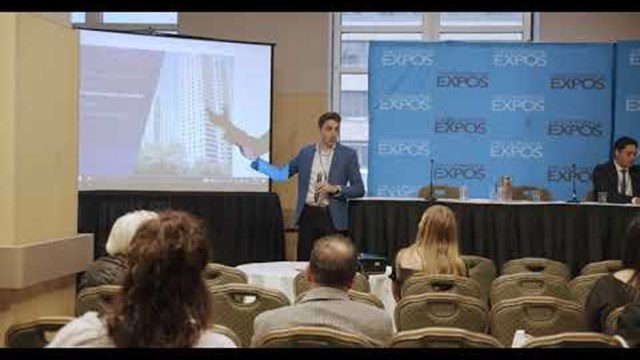With interest rates at historic lows, never rising too far above 4% these days, boards are looking at refinancing their co-op's underlying mortgage to build up their reserves as a viable alternative to raising maintenance fees or levying assessments on shareholders.
Even better, reports Andre Kaplan, chief financial officer for Manhattan-based Orsid Realty, “Most of our buildings that are refinancing have taken a lot of additional cash to fund their future capital reserves and have kept their debt service the same.”
The payoff can be startling.
“We have a building on the Upper East Side that realized a $20,000 windfall in cash flow on a monthly basis,” reports Neil Sonenberg, a senior partner with the accounting firm of Rosen Seymour Shapss Martin and Co. “That’s almost a quarter of $1 million for the year. We are talking sizable savings.”
Should Your Building Refinance?
Not every building is in a position to refinance. Condominiums, which do not have underlying mortgages, obviously don’t have much to gain. But co-op boards owe it to themselves to sit down to evaluate the possibilities. “The first question you need to ask,” advises Kaplan, “is, do we need to refinance our mortgage?”
If the term of the underlying mortgage is nearly over, of course, the co-op has no choice but to get a new loan. And as the majority of co-op mortgages, which are commercial instruments, are for 10 year terms, there is a good chance the board will find their mortgage is near enough to expiration to justify a refi. And regardless of how many years are left, if their mortgage is two or more points above current rates, they might well find it beneficial.
The board, working with an adviser who is thoroughly familiar with the finances and operation of their building, should do a thorough cost-benefit analysis to determine whether it is worth the effort. The consultant might be their accountant, the financial officer of their management company, their investment adviser or a mortgage broker they have experience with.
Look a Decade Out
The process begins with an assessment of projected expenses for the next 10 years—a capital plan or a reserve study that provides for repair or renovation projects based on an evaluation of the conditions of the major systems in the building, including heating and ventilation, the roof and the façade. Other expenses could include costly Local Law 11 inspections and improvements to increase the value of the property.
The plan looks at capital project expenses exclusively. Refinancing is not a remedy for ongoing shortfalls in the operating budget. If your building has a negative cash flow for more than a year, it needs to raise the maintenance.
The next step is to look at the sources of revenue the corporation can count on to fund projected expenses. The primary source is maintenance from shareholders. Then comes rent from commercial tenants if there are any, sublet fees, flip taxes, and income from storage lockers, the laundry room and other amenities.
If the board finds revenue will not be sufficient to cover projected capital improvements, it is left with two choices: “The board will have to decide whether they want a maintenance increase or a refi,” explains Sonenberg. His opinion? “I go with refi all the way. This is the time to do it because the rates are only going up.”
The co-op might already have an unsecured line of credit, which because their fees are so low is an excellent way to borrow money from a bank—but only in a pinch. Their rates are adjustable, floating along with the LIBOR, and unpredictable.
According to Gregg Winter of Winter & Company, a commercial mortgage brokerage firm, “It is good to know that you have a line of credit that you can tap into if an unforeseen situation pops up—say, a pointing or roof issue. But most co-op boards don’t use their credit line for scheduled maintenance, repairs and expenses.”
What’s it Going to Cost?
The next step is to calculate the cost of a new loan. The first thing to consider is the prepayment penalty on the current loan. A common feature in commercial mortgages, the penalty diminishes over the course of the loan according to a schedule of thresholds. “As a co-op board you have to be very conscious of when those dates occur,” advises Winter. “I spend half my time when refinancing co-ops navigating around the prepayment penalty on the old loan.”
One way to manage a potentially deal-breaking prepayment penalty on the current loan is to obtain a forward commitment to the new mortgage. For a fee of half a point or so the forward commitment allows you to lock in a rate but delay the closing period. One deal Winter made the beginning of this year allowed a co-op to lock in a rate of 4% while delaying the closing for nine months. “They avoided hundreds of thousands of dollars in prepayment penalty,” he recalls. “And this is not an unusual story.”
There’s another factor that takes the sting out of prepayment penalties: classified as interest paid on the building’s debt, they can be taken as an additional deduction by each shareholder in the tax year in which it is paid.
In the end, says Sonenberg, the deciding factor is “how long it’s going to take you to get back the money. If the prepayment penalty is negligible, it’s really a no-brainer to refinance. You pay some more accounting fees, more legal fees, but in the long run you’re definitely going to be better off.”
It might be worth the trouble even if the prepayment penalty is huge. One of Orsid’s buildings “paid a $1 million prepayment penalty yet managed to pull up $2 million in additional cash and keep their debt service the same,” recalls Kaplan.
Choosing the Terms
Once it is clear the building could benefit by refinancing, the board will commission their intermediary to help them determine the best type of loan to take and then to approach banks to get the best deal they can.
“I would go to a multitude of different banks,” says Kaplan, “and set up a spreadsheet with all the different products from all the different banks and the interest rates they offer. Then we would work through what the costs are and what product would best suit the building’s needs.”
Just make sure to have just one intermediary reach out to banks, advises Mindy Goldstein, senior vice president of National Cooperative Bank (NCB). “It can be the managing agent, a broker, an attorney, an accountant—the bank wants to deal with one point person. When you have different people calling the bank, that’s where miscommunications happen.”
They Really Like You
With banks notoriously cautious in lending to individual buyers these days, board members will likely be surprised by the range of products and favorable terms they’re offering co-op buildings. Why is that?
“The underlying mortgage in a co-op is usually a miniscule percentage of the value of the property,” explains Winter. “They like very low leverage, very stable properties like this. They bend over backwards to try to accommodate the needs of co-op boards.”
Because most commercial mortgages come with prepayment penalties, co-ops usually take 10 or 15 year loans. But features vary greatly.
Boards who value building equity will go with an amortized mortgage, which pays down the loan over the course of 10 or 15 years. Boards after the lowest monthly payment will take an interest-only loan, as long as they are willing to face refinancing the entire amount of the loan by the end of the term or before.
A popular hybrid is the 10-year fixed with a 30-year amortization schedule, which pays down much of the mortgage principal but leaves a balloon after 10 years. Some loan products offer the option to continue the loan past the 10 years at an adjustable rate with no prepayment penalty in the last 20 years.
An interesting alternative is a kind of self-styled amortization plan. The co-op can take out a 10-year interest-only mortgage with an option to prepay 10% per year of the principal amount without any penalty. This allows the corporation to lock in a low rate for 10 years and pay it down when it feels comfortable doing that, without committing to a fixed amortization schedule.
Banks active in co-op lending include Sovereign, New York Community Bank, Astoria, Federal Savings Bank, Valley National Bank, Dime Savings Bank, Bank of New York Mellon and HSBC. Boards looking at borrowing several million dollars should explore working with National Cooperative Bank. Because NCB is federally chartered, the loans they issue are exempt from the 2.8% New York City mortgage recording tax.
What Banks Want to See
While banks do feel safer working with co-ops than some other commercial borrowers, they still put them through a grueling application process, poking through every aspect of the finances and operation of the building.
For example, Winter & Company is handling an underlying mortgage for an 82-unit co-op in Jackson Heights, Queens. “One of the brokers in my shop is putting together a massive spreadsheet that shows the layout of every single unit, the maintenance in every unit, whether there are any arrears in that unit, whether it is owner-occupied, owned by a shareholder or rented, or owned by the sponsor and rented. In every single case we’re showing the cash flow.”
According to Sonenberg, “The perfect candidate for refinancing is a well-managed building operating profitably or near break even for the past three years. It has decent capital expenditures, meaning that they are keeping and maintaining their plant properly, and they have a decent balance sheet with a fairly strong cash position. And their accounts receivable are not out of control.”
The loan-to-value ratio is a key factor. “A 10% loan to value can outweigh a lot of negatives,” says Winter. Plus, explains Sonenberg, “You definitely want at least three months of maintenance in your reserves. Otherwise don’t even go to the bank, because they aren’t going to give it to you.”
On the revenue side, the building should keep a strict watch on arrears. “It can go to 3%,” says Goldstein. “That’s manageable. But if somebody pays late for a year and suddenly arrears are 10% of annual maintenance, that becomes an issue—a red flag.” She recommends staying on top of any shareholder that is over 30 days late.
Regarding sublets, the common wisdom is the fewer the better. But, says Winter, “There is no specific percentage, because it’s also going to the depend on the size of the building and the leverage. For any lending decision, lenders look at a constellation of variables.”
For sure, says Goldstein, “you want a clearly defined and enforced sublet policy.”
Naturally, litigation is never an attractive entry in a building’s resume, and the co-op might be tempted to deep-six that bit of information. They should resist that temptation. “Co-ops need to be very up front with their intermediary and the lenders about any negative issues,” advises Winter.
“Typically lenders can handle bad news because it can usually be overcome,” he observes. “But you need to be very forthright about it.” He recommends putting any potential problem right on the first page of the presentation to the bank, along with the co-op’s plan for dealing with a worst-case scenario.
Think Big and Grow Rich
Board members often get nervous when their advisers recommend they add millions of dollars of new debt to the corporation’s balance sheet. They should take a deep breath.
“I’d say the biggest mistake we see 90% of co-ops make is they don’t borrow enough to fund the capital reserves for future improvement,” observes Goldstein. “Most board members have a two or three-year term and a lot of the times they don’t look beyond their term. You want to look to your professionals as to how much to borrow.”
Winter advises, “Be realistic about the next round of capital improvements that are going to hit the building. It is not unusual to hear from a building a year or two later that they really should have borrowed more money. You’re going to cover all the closing costs of refinancing anyway—you might as well make sure that you emerge from the refinancing with not only adequate cash to address the capital needs of the co-op, but with enough cash to replenish the reserve fund to a reasonable level.”
After all, says Goldstein, “You only go to the well once.”
Steven Cutler is a freelance writer and a frequent contributor to The Cooperator.










Leave a Comment